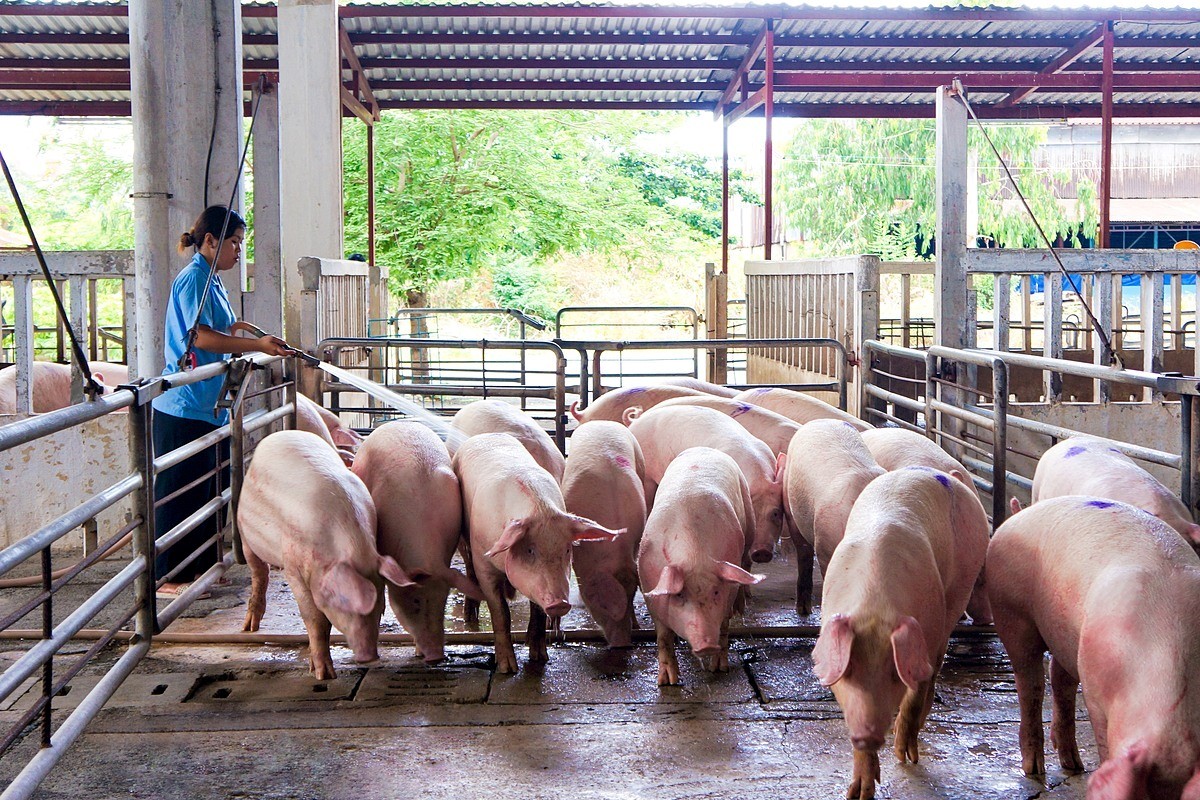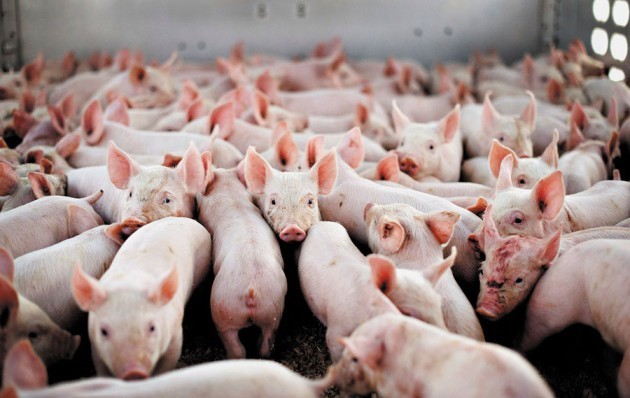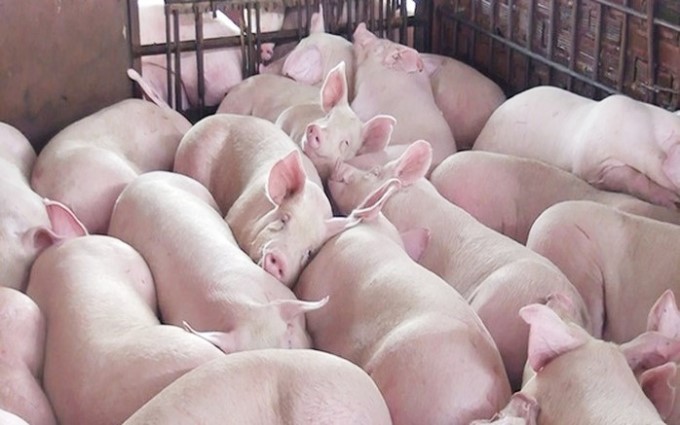In the current situation where the price of animal feed is increasing, to contribute to reducing feed costs and improving livestock efficiency, we need to pay more attention to breeding animals.
Selecting a boar for breeding is an important step in the breeding process, directly affecting the reproductive performance, growth rate, and meat quality of the piglets. Selecting a good boar for breeding not only helps optimize production but also improves the quality of the pig herd, bringing high economic efficiency.
1. SELECTING MALE BREEDING PIGS
Choosing a boar for breeding is not simply choosing a large and healthy pig, but requires careful consideration of many different factors, including genetics, physique, health, and fertility.
 Image of choosing boars
Image of choosing boars
1.1. Origin and Genetic Characteristics
– Male pigs must have a clear origin and a fully recorded genetic history. This helps breeders know clearly about the male pig’s fertility, growth rate, and meat quality.
– Have parents or grandparents with a good track record of producing high yielding piglets.
1.2. Body Shape and Structure
– Male pigs need to have a weight appropriate to their age, a balanced body, and well-developed muscles. Normally, male pigs weigh between 100 and 120 kg when selected.
– A boar with a long body, broad shoulders, and deep chest is a sign of a boar capable of producing high-yielding offspring.
– The legs of male pigs must be strong, straight, and free of deformities. This helps the male pig to mate well and support its body weight effectively.
1.3. Fertility
– Semen quality is an extremely important criterion for male fertility. Semen needs to be tested for quantity, sperm motility, and fertility. A good boar needs healthy sperm, no deformities, high mobility, and low dead sperm rate.
– A boar with good reproductive quality will have a high sperm count, healthy sperm with a rate of deformed sperm below 15%.
– The boar should have a strong mating instinct, which is demonstrated by his activity and desire to meet the sow. The boar’s natural mating ability should also be assessed by observing trial mating.

1.4. Health and Immunity
– Breeding boars must be free of infectious diseases: such as blue ear disease, swine fever, or respiratory diseases. And regular health checks and full vaccination are mandatory conditions.
– Boars need to be able to adapt well to climate conditions and rearing environment, and not easily get sick when the weather changes.
1.5. Personality and Behavior
– Boars need to have a gentle temperament, not too aggressive, to be easy to manage and breed. Too aggressive boars can cause difficulties in the raising and breeding process.
– Feeding Behavior: Boars should have good feeding habits, not be picky eaters, and be able to maintain their ideal weight without requiring too much care.
2. THE PROCESS OF SELECTING A BOAR
2.1. Choose by age
– Boars should be selected between 6 and 8 months of age, when they have fully developed their physiological characteristics.
– After selection, boars need to be monitored for about 1 to 2 months to assess their fertility and health before being officially put into use.
2.2. Semen testing and evaluation: for a breeding pig, testing and evaluating semen quality is extremely important.
– Boar semen needs to be collected and tested periodically to ensure quality. This should be done by experts or at specialized facilities.
– Need to be evaluated for factors such as: color, odor, viscosity, and sperm quality in terms of health, mobility, amount of abnormal sperm, etc. Semen samples that meet the standards will be used for the breeding process.

2.3. Manage and take care of the pig well after choosing
– Nutrition: Boars need to be provided with a proper diet, rich in protein and minerals to maintain health and fertility. Feed must be of sufficient quality and quantity so that boars do not become obese or malnourished.
– Boar pens need to be airy, clean, and have enough space for the pigs to move around. Good housing conditions help pigs maintain their health and reduce the risk of disease.
– The mating process needs to be closely monitored to ensure effectiveness. The boar should not be mated too many times in a short period of time to avoid reducing the quality of semen.
Selecting a boar for breeding is an important and complex process, requiring breeders to master the selection criteria and techniques. A good boar not only affects a litter of pigs but also has a long-term impact on the quality of the pig herd for many generations. Therefore, selecting the right boar for breeding is extremely important to ensure success in breeding.
